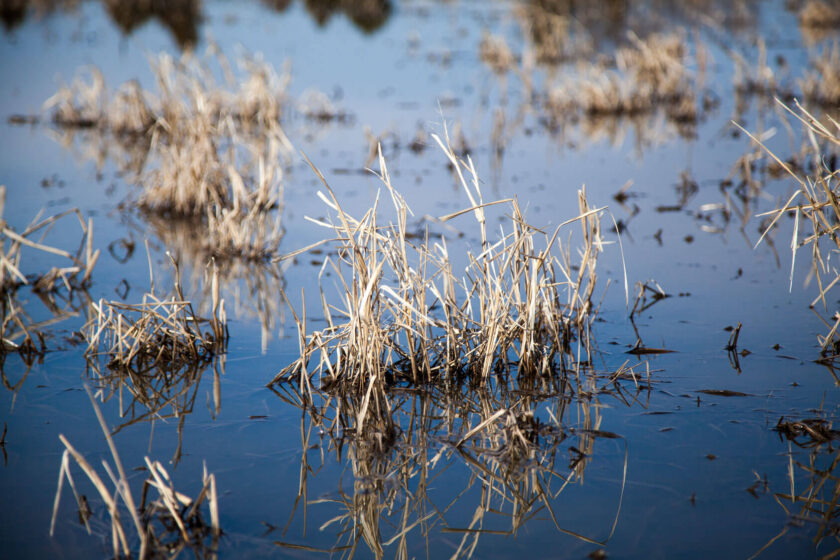What is a Wetland?
Wetlands are what their name implies: land where naturally occurring water saturates soil and plants for at least some period of time during the year.
Wetlands provide habitat to plants, fish, frogs, birds and other animals. Wetlands work like natural filters that slow the movement of water over land and trap nutrients, sediment and other pollutants before they can enter rivers, streams and the Chesapeake Bay. In many ways, wetlands in our region work almost as hard as farmers do.
Wetlands can be tidal or non-tidal, depending on where they are located. Most of the wetlands on farms in the Chesapeake Bay watershed are non-tidal, located in low-lying areas where groundwater saturates the soil for part of the year. While it can be challenging to grow crops in these wet areas, many native plants are well-suited to live in this kind of habitat.
For a habitat to be considered a wetland, it must meet three characteristics.
Soil
Wetland soil must experience several weeks of saturation with water. This creates the anaerobic or oxygen-less conditions that give wetland soil its characteristic black or gray color.
 Photo by
Chesapeake Bay Program
Photo by
Chesapeake Bay Program
Water
Wetlands must be flooded with water during some or all of the growing season. While some wetlands may be flooded year-round, others may be wet in the spring but dry up as summer arrives.
 Photo by
Will Parson/Chesapeake Bay Program
Photo by
Will Parson/Chesapeake Bay Program
Plants
Wetlands must permanently or periodically support plants adapted for life in wet soils. These so-called hydrophytes include hundreds of species across the watershed, some of which are cattails and bulrushes, ferns, skunk cabbage and asters.
 Photo by
Will Parson/Chesapeake Bay Program
Photo by
Will Parson/Chesapeake Bay Program